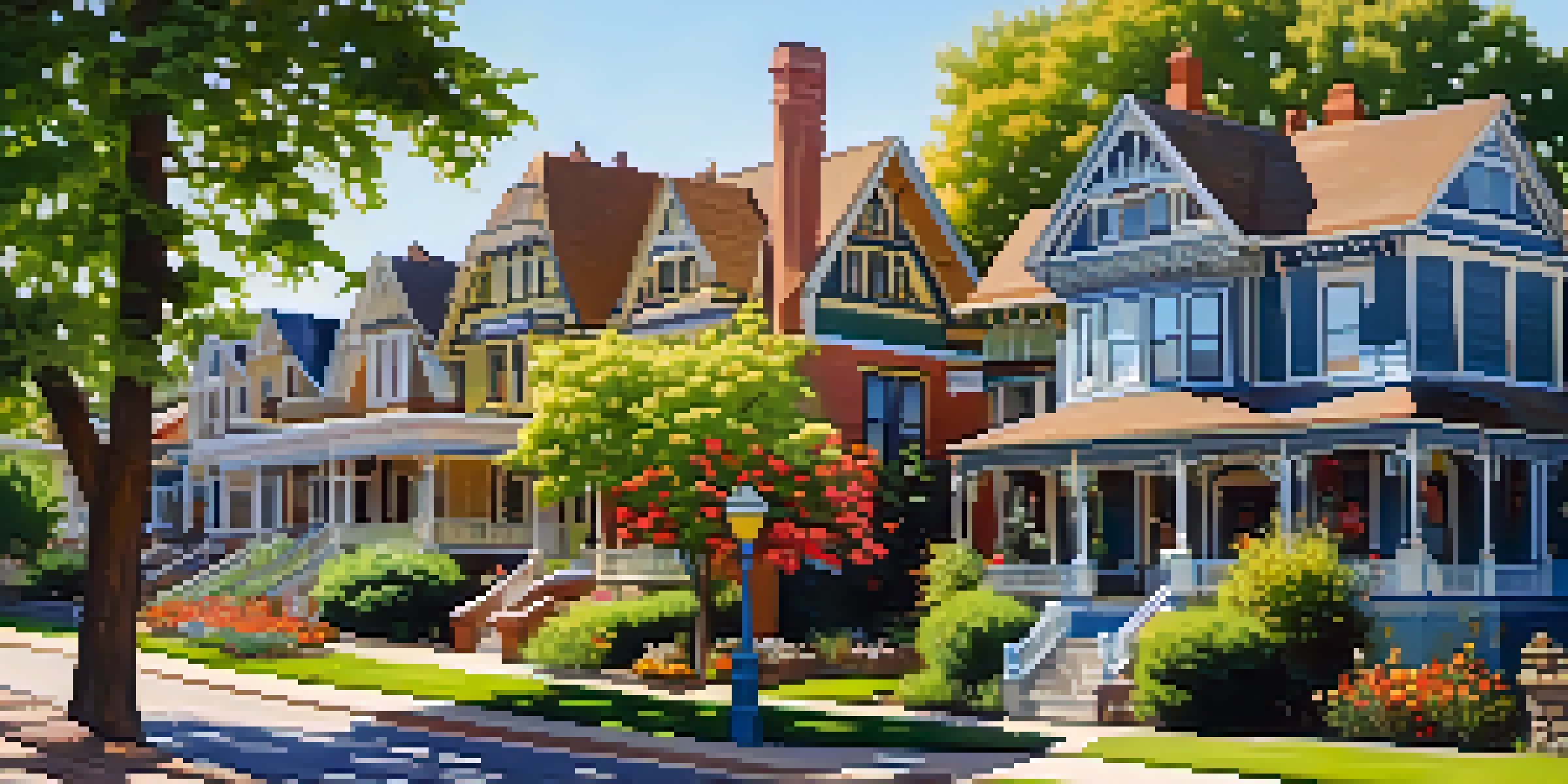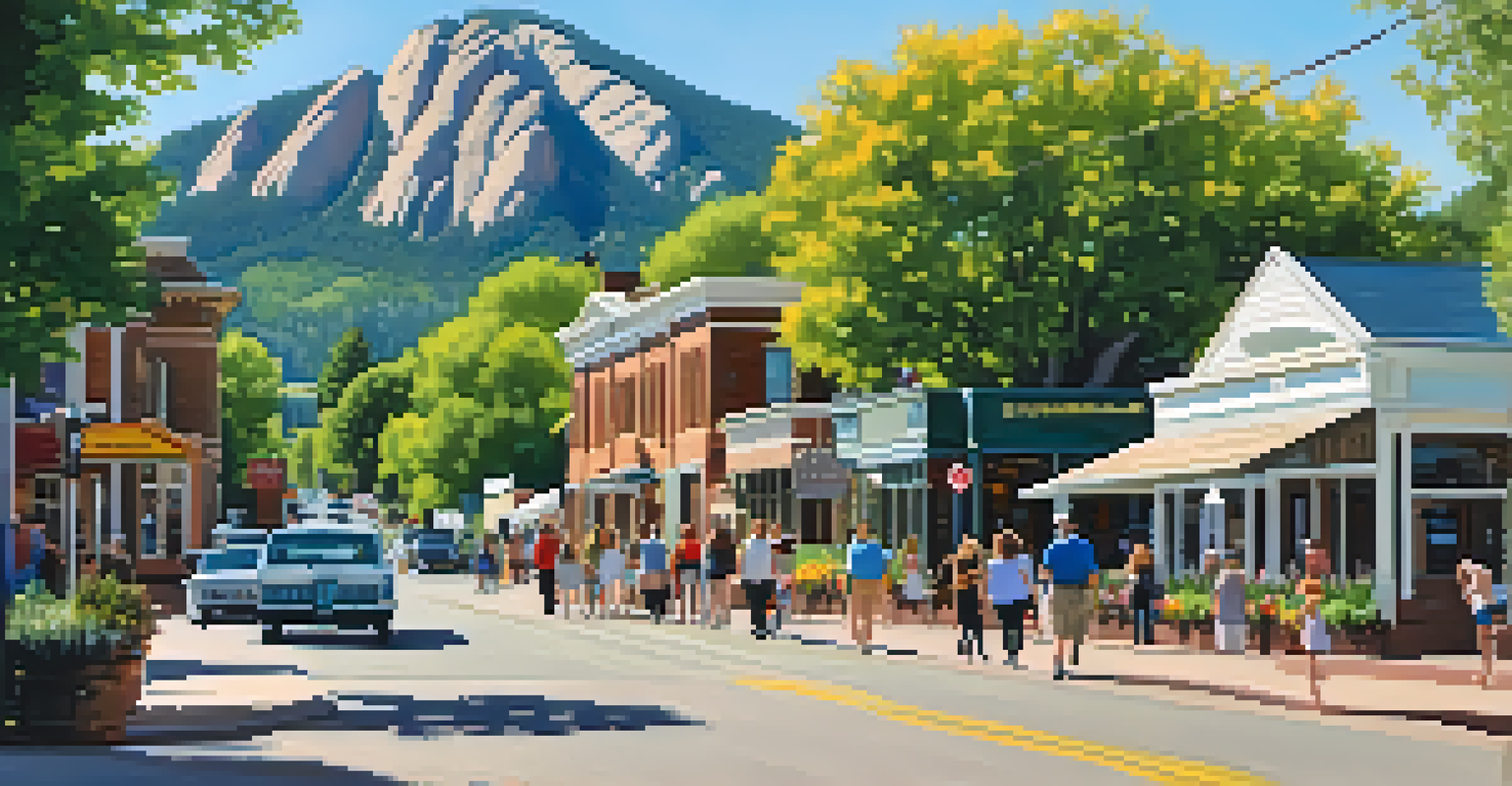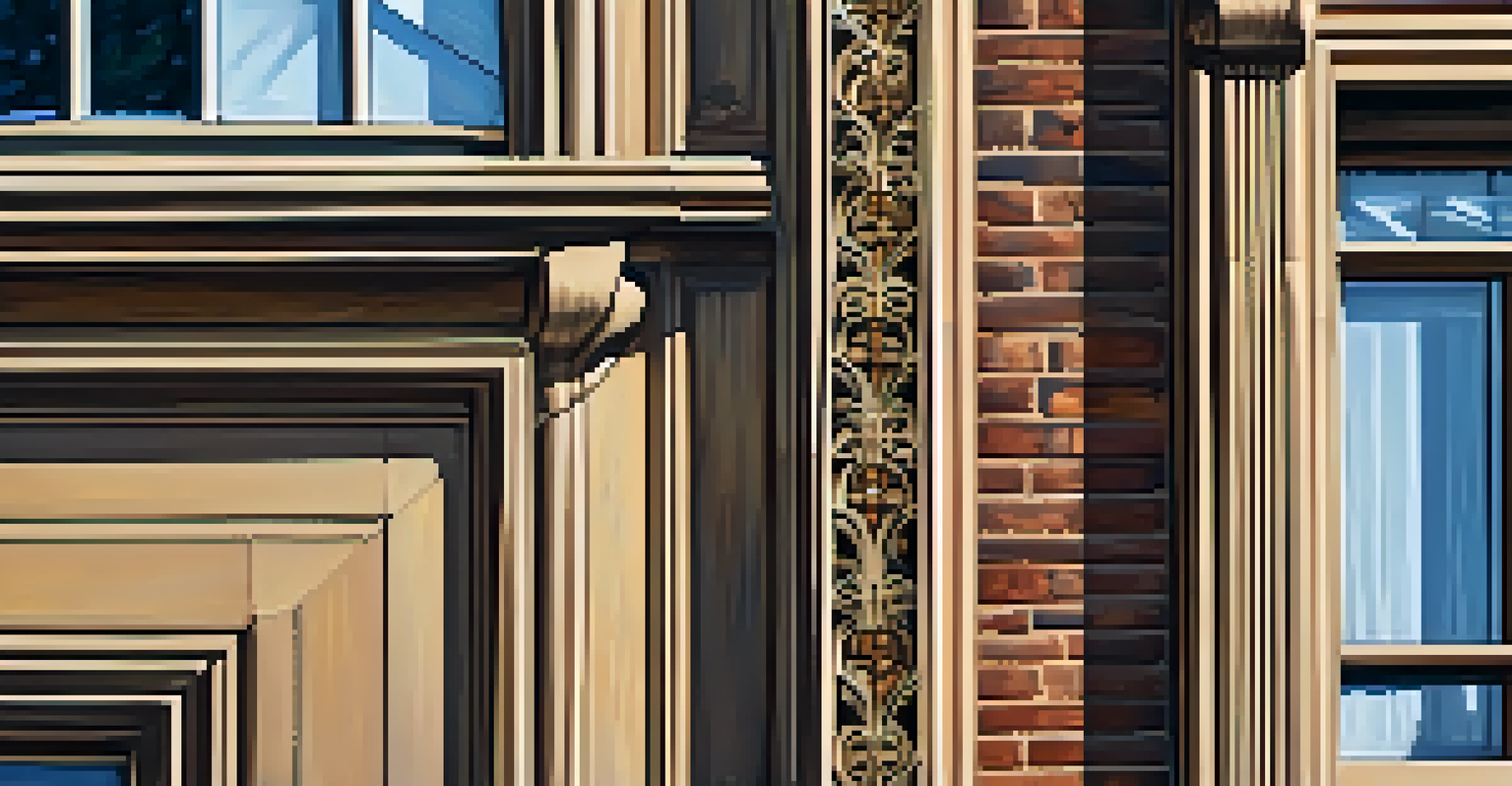Exploring Boulder's Historic Preservation Districts: An Overview

Understanding Boulder's Historic Preservation Goals
Boulder's historic preservation efforts aim to maintain the city's rich architectural heritage. These initiatives not only protect historical sites but also promote a sense of community and identity among residents. By preserving these landmarks, Boulder ensures that future generations can appreciate the stories and cultural significance embedded in them.
Preservation is a form of stewardship, a way for us to honor the past while nurturing the future.
The city prioritizes structures that reflect its history, showcasing various architectural styles from different time periods. This diversity adds character to the neighborhoods and makes Boulder a unique place to live and visit. Preservation goals are often guided by community input, emphasizing the importance of local voices in shaping heritage policies.
Ultimately, Boulder's approach to historic preservation balances modern development with the need to honor its past. This commitment fosters a deeper appreciation for the city’s history, encouraging residents and visitors alike to explore and engage with these historic districts.
A Brief History of Boulder's Preservation Districts
Boulder's historic preservation movement began in the 1970s as a response to rapid urban development threatening its unique heritage. The local government recognized the need to protect buildings that told the story of the city's past. Over the decades, various districts were designated to safeguard their distinctive architectural features and cultural significance.

One of the earliest districts established was the Mapleton Hill Historic District, which showcases beautiful Victorian homes. This area, along with others, has become a focal point for preservation efforts, illustrating the evolution of Boulder's architectural landscape. Each district offers its own narrative, reflecting the city's growth and transformation.
Boulder's Rich Architectural Heritage
Boulder's historic preservation efforts aim to protect and celebrate the city's diverse architectural styles, fostering a sense of community and identity.
Today, the preservation districts are more than just collections of old buildings; they serve as living museums that celebrate Boulder's history. By learning about these areas, residents and visitors can connect with the past in meaningful ways, making each stroll through the districts a journey through time.
Key Historic Preservation Districts in Boulder
Boulder's historic preservation districts include several notable areas, each with its own unique charm. The Mapleton Hill Historic District is renowned for its stunning Victorian architecture and lush tree-lined streets. Another significant area is the Chautauqua Historic District, famous for its iconic auditorium and scenic views of the Flatirons.
History is not a burden on the memory but an illumination of the soul.
In addition to these, the University Hill District reveals the influence of the nearby University of Colorado, showcasing a blend of historic homes and vibrant local businesses. Each district not only highlights architectural beauty but also offers a glimpse into Boulder's diverse history, including its educational roots.
Exploring these districts provides a rich experience, as they serve as reminders of Boulder’s past while continuing to be integral parts of the community today. The preservation of these areas ensures that their stories remain alive, inviting everyone to partake in their heritage.
The Role of the Boulder Landmarks Board
The Boulder Landmarks Board plays a crucial role in the preservation of the city's historic districts. Comprised of community members and experts, this board evaluates applications for changes to historic properties and provides guidance on preservation practices. Their work ensures that any developments respect the historical integrity of the neighborhoods.
In addition to reviewing applications, the Landmarks Board also educates the public about the importance of preserving Boulder's architectural heritage. They conduct outreach programs and workshops, fostering community involvement and awareness. This helps residents understand how they can contribute to preservation efforts.
Community Engagement is Crucial
Active participation from residents and local organizations is essential for advocating and supporting Boulder's historic preservation initiatives.
By balancing growth with preservation, the Boulder Landmarks Board helps maintain the character of the city while accommodating modern needs. Their commitment to upholding preservation standards ensures that Boulder's history is not only protected but celebrated.
Community Involvement in Preservation Efforts
Community involvement is vital to the success of Boulder's historic preservation initiatives. Local residents often have deep-rooted connections to the neighborhoods and play an essential role in advocating for preservation. Through public meetings and events, citizens can voice their opinions and share their stories about the importance of maintaining these historic areas.
Volunteer groups and nonprofit organizations also contribute significantly, organizing events such as historic home tours and educational programs. These efforts help raise awareness of Boulder's rich history and inspire a sense of pride among residents. When community members engage in preservation activities, they foster a culture of stewardship over their local heritage.
Ultimately, the collaboration between the city, local organizations, and residents cultivates a vibrant preservation landscape. This collective effort not only protects historical sites but also strengthens community bonds, creating a shared responsibility for safeguarding Boulder's unique character.
Challenges Facing Historic Preservation in Boulder
While Boulder's historic preservation efforts have been largely successful, challenges still exist. One significant challenge is balancing development pressures with the need to protect historical sites. As the city grows, developers may seek to alter or replace older structures, raising concerns about the potential loss of heritage.
Another challenge is securing adequate funding for restoration and maintenance of historic properties. Many owners of historic homes may struggle with the costs associated with preserving their properties, making it essential for the city to provide support and resources. Grants and financial incentives can play a crucial role in helping homeowners maintain their historic homes.
Balancing Growth and Preservation
As Boulder evolves, it faces the challenge of integrating modern development with the preservation of its historic sites, ensuring that the city's character remains intact.
Finally, public awareness and education remain ongoing challenges. Ensuring that residents understand the value of preservation and its impact on the community is vital. By promoting the benefits of preserving Boulder's history, the city can foster greater support and participation in its preservation initiatives.
The Future of Boulder's Historic Preservation Districts
Looking ahead, the future of Boulder's historic preservation districts is filled with potential and promise. As the city continues to evolve, there will be opportunities to incorporate modern amenities while respecting historical integrity. By engaging in thoughtful planning and community dialogue, Boulder can successfully navigate the challenges of growth while preserving its unique character.
The preservation of these districts will also adapt to changing community needs and values. For instance, there may be a greater emphasis on sustainability and energy efficiency in historic buildings. By integrating modern practices with historic preservation, Boulder can create a model for how to honor the past while embracing the future.

Ultimately, the future of Boulder's historic preservation districts hinges on the collaboration between city officials, residents, and preservation advocates. Together, they can ensure that these cherished areas thrive for generations to come, allowing the stories of Boulder’s past to continue resonating in the present.